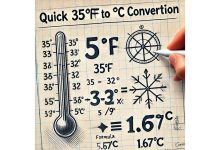Simple and Compound Machines: An Overview
Machines are integral to modern life, playing a crucial role in increasing efficiency and performing tasks that would otherwise be arduous or impossible. They can be classified into two main categories: simple machines and compound machines. Understanding the principles behind these machines provides insight into their function and utility in various applications.
Simple Machines
Simple machines are the most basic types of machines, designed to make work easier by amplifying force or changing its direction. There are six classic types of simple machines, each with its own unique mechanism and application.
1. Lever
A lever consists of a rigid bar that rotates around a fixed point called the fulcrum. The lever’s function is to amplify force, making it easier to move a load. The lever can be classified into three classes based on the relative positions of the fulcrum, effort, and load.
- First-Class Lever: The fulcrum is between the effort and the load. Examples include a seesaw and a crowbar.
- Second-Class Lever: The load is between the fulcrum and the effort. Examples include a wheelbarrow and a nutcracker.
- Third-Class Lever: The effort is between the fulcrum and the load. Examples include a pair of tongs and a fishing rod.
2. Wheel and Axle
The wheel and axle system consists of a large wheel attached to a smaller axle. When force is applied to the wheel, it is transferred to the axle, or vice versa. This machine is used to increase the efficiency of movement and reduce friction. Common examples include door knobs, bicycle wheels, and rolling pins.
3. Pulley
A pulley consists of a wheel with a grooved rim around which a rope or cable runs. Pulleys are used to change the direction of the applied force, making it easier to lift heavy loads. Pulleys can be classified into fixed, movable, or compound pulleys, and are commonly found in flagpoles, cranes, and well systems.
4. Inclined Plane
An inclined plane is a flat surface tilted at an angle to the horizontal. It reduces the amount of force required to lift a load by spreading the effort over a greater distance. Examples of inclined planes include ramps, slides, and roads built on a slope.
5. Wedge
A wedge is a device with two inclined planes joined together to form a sharp edge. It is used to split, cut, or divide objects. Common examples include knives, axes, and chisels. The wedge operates by concentrating force on a small area, which increases its effectiveness in cutting or splitting.
6. Screw
A screw is essentially an inclined plane wrapped around a central core. It converts rotational force into linear force, allowing it to fasten materials together. The threads of a screw increase the distance over which force is applied, making it easier to hold objects securely. Examples include screws used in construction and various mechanical devices.
Compound Machines
Compound machines, also known as complex machines, are combinations of two or more simple machines working together to accomplish a task. These machines leverage the principles of simple machines to perform more complex functions efficiently.
Examples of Compound Machines
- Bicycle: A bicycle incorporates several simple machines, including levers (pedals), wheels and axles (wheels), and pulleys (gears) to enable movement.
- Can Opener: A can opener combines levers, wheels and axles, and gears to cut through the metal lid of a can.
- Scissors: Scissors are a compound machine that uses levers and wedges to cut materials.
Applications and Impact
The principles of simple and compound machines are foundational to engineering and technology. They are applied in various fields, including manufacturing, construction, transportation, and everyday household tasks. By understanding how these machines work, engineers and designers can innovate and create more efficient tools and systems.
Engineering and Design
In engineering, the design of machines often involves combining different simple machines to achieve desired outcomes. For instance, cranes use pulleys and levers to lift heavy materials, while modern vehicles integrate various simple machines to enhance performance and safety.
Everyday Life
Simple and compound machines are embedded in everyday life, often in ways that are not immediately obvious. From household appliances like washing machines and dishwashers to tools used in gardening and maintenance, the principles of simple machines facilitate tasks and improve quality of life.
Conclusion
Simple and compound machines have revolutionized human capabilities by making tasks easier and more efficient. While simple machines operate on basic principles of force and motion, compound machines demonstrate the power of combining these principles to perform complex tasks. The ongoing study and application of these machines continue to drive technological advancements and improve various aspects of daily life. Understanding the mechanics behind these devices not only enhances our appreciation of their functionality but also inspires future innovations in machine design and application.

